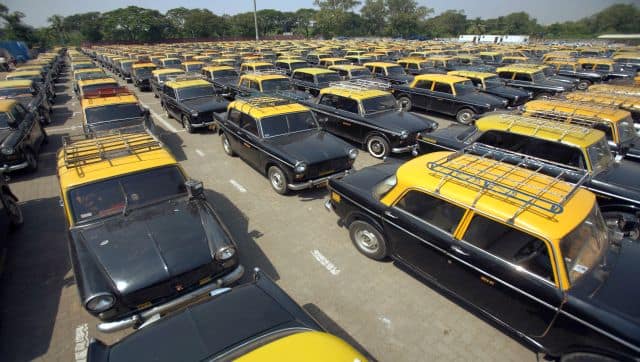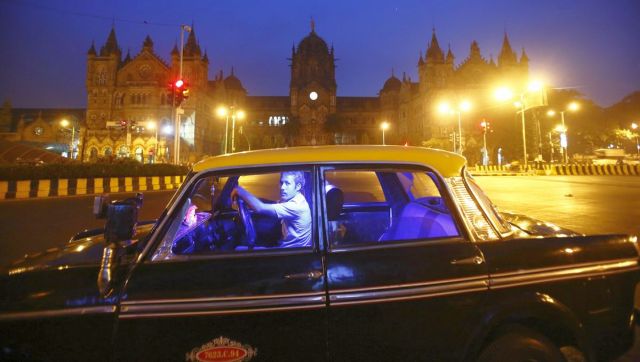The year is 1964. Mumbai witnessed a launch of a new car by Premier Automobiles Ltd (PAL) under licence from Fiat, Italy – the Fiat Millecento or 1100. Soon this car with its four-cylinder 1100cc engine proved to be totally reliable and efficient – making it the perfect option for Mumbai’s taxis. Now six decades later, in 2023, Mumbai is bidding adieu to a part of its cultural landscape as the iconic Fiat Padmini ‘
Kaali-Peelis
’, as they are fondly called, are taking the final bow on the bustling streets of the financial capital. “Yeh Mumbai ki shaan hai aur hamari jaan hai (it is the pride of Mumbai and life of mine),” said Abdul Kareem Karsekar, who owns the last registered Premier Padmini taxi of Mumbai, bearing registration number MH-01-JA-2556. But why is ‘Maximum City’ phasing out the iconic cabs? And more, importantly, how did these cabs become a part of Mumbai’s legacy? A farewell to Mumbai’s ‘Kaali Peeli’ Mumbai’s farewell to the Padmini taxis is owing to the 20-year-old rule in the state of Maharashtra. The last such Padmini taxi had been registered in 2003, which means that as of 30 October, 2023, all such cabs would not be allowed to operate. The Maharashtra government has a 20-year age limit for taxis, which was introduced to phase out older, more polluting vehicles. The Maharashtra City Taxi Rules 2017 has set a limit of 20 years for all cabs. This had come on the recommendations of the Hakim panel’s report. Experts stated that as the vehicles grew older, they became less efficient and more polluting. This move comes shortly after Mumbai also phased out BEST-run iconic
double-decker buses
. This happened due to the end of their 15-year life.
Also read: What #MumbaiRains taught me: Good old Kaali Peeli is still better than Uber
The farewell to Mumbai’s ubiquitous mode of public transport has also evoked strong reactions from the public. Some have even demanded that the car be preserved on the road or in a museum. [caption id=“attachment_13317552” align=“alignnone” width=“640”] A ‘Premier Padmini’ taxi in Mumbai. After six decades, Mumbai’s iconic ‘Kaali Peeli’ taxis will go off roads from today. PTI[/caption] Classic car enthusiast Daniel Sequeira was quoted as telling news agency PTI that the cars have been a part of the city’s landscape for more than five decades and hold sentimental value for several generations. “In the city, we are preserving several old monuments. Similar to those, we also need to preserve these iconic cabs, which are living monuments.” Even noted businessman Anand Mahindra paid homage to the taxis, posting on X, “Goodbye and alvida, kaali-peeli taxis. Thank you for the good times.”
A ‘Premier Padmini’ taxi in Mumbai. After six decades, Mumbai’s iconic ‘Kaali Peeli’ taxis will go off roads from today. PTI[/caption] Classic car enthusiast Daniel Sequeira was quoted as telling news agency PTI that the cars have been a part of the city’s landscape for more than five decades and hold sentimental value for several generations. “In the city, we are preserving several old monuments. Similar to those, we also need to preserve these iconic cabs, which are living monuments.” Even noted businessman Anand Mahindra paid homage to the taxis, posting on X, “Goodbye and alvida, kaali-peeli taxis. Thank you for the good times.”
And while the kaali-peelis will go off the roads, they won’t disappear completely, noted Pradeep Palav, a Parel resident and art lover. “Presently, we have scores of car models as taxis, but when it comes to painting a taxi only the black-and-yellow Premier Padmini pops up in our mind, as it ruled Mumbai’s streets for almost five decades and gave a face or identity to the city’s taxis,” he said to PTI. History of the ‘Kaali-Peeli’ But as we bid a fond farewell to these icons, what’s the history behind them? AL Qaudros, the general secretary of the Mumbai Taximens Union, recalls that the Premier Padmini’s journey as a taxi came in 1964 with the model ‘Fiat-1100 Delight’, a powerful 1100-cc car with a steering-mounted gear shifter. It was small compared to “big taxis” like the Plymouth, Landmaster and Dodge. Soon, taxi drivers realised the value and merit of this roly-poly looking car and soon one could see only the premier Padmini as taxis on the road. Incidentally, the looks of the vehicle earned it the rather unflattering but fond nickname of ‘dukkar’ – pig in English. The car, interestingly, underwent a number of rebranding exercises. In the 1970s, the model was rebranded as Premier President and later as Premier Padmini – named after the 14th century Mewar princess, who also went by Padmavati. [caption id=“attachment_13317572” align=“alignnone” width=“640”] Historians note that while Kolkata took to the Ambassador, Bombay, as it was then called, chose the Premier Padmini. File image/Reuters[/caption] And what about the yellow and black colour combination? Bharat Gothoskar, a city chronicler and founder of the KHAKI Heritage Foundation, says that the unforgettable and unmissable colour combination of the cabs was due to Vithal Balkrishna Gandhi, a freedom fighter who later became an MP. Gandhi had recommended to Prime Minister Jawaharlal Nehru that the cabs carry the black-and-yellow combination – the upper in yellow so that they can be spotted from a distance and the lower part black to hide any stains. Historians also note that while Kolkata took to the Ambassador, Bombay, as it was then called, chose the Premier Padmini. Explaining this, Quadros said: “Premier Padminis were popular among cabbies due to their smaller size, reliable engines, easy maintenance, and comfortable interiors, but after their production stopped, unavailability of spare parts became the main problem.” Gothoskar added, “Probably the tendency of Mumbaikars is to optimise space and hence the taxi drivers in the city preferred the Padmini as the ‘Kaali-Peeli’.” [caption id=“attachment_13317672” align=“alignnone” width=“640”]
Historians note that while Kolkata took to the Ambassador, Bombay, as it was then called, chose the Premier Padmini. File image/Reuters[/caption] And what about the yellow and black colour combination? Bharat Gothoskar, a city chronicler and founder of the KHAKI Heritage Foundation, says that the unforgettable and unmissable colour combination of the cabs was due to Vithal Balkrishna Gandhi, a freedom fighter who later became an MP. Gandhi had recommended to Prime Minister Jawaharlal Nehru that the cabs carry the black-and-yellow combination – the upper in yellow so that they can be spotted from a distance and the lower part black to hide any stains. Historians also note that while Kolkata took to the Ambassador, Bombay, as it was then called, chose the Premier Padmini. Explaining this, Quadros said: “Premier Padminis were popular among cabbies due to their smaller size, reliable engines, easy maintenance, and comfortable interiors, but after their production stopped, unavailability of spare parts became the main problem.” Gothoskar added, “Probably the tendency of Mumbaikars is to optimise space and hence the taxi drivers in the city preferred the Padmini as the ‘Kaali-Peeli’.” [caption id=“attachment_13317672” align=“alignnone” width=“640”] The iconic Kaali Peeli has also been etched in pop culture – there are Bollywood movies that feature the car prominently. Also, they have been the subject of a number of photography projects. File image/AFP[/caption] Naresh Fernandes, editor-in-chief of Scroll and author of a number of books that delve in Mumbai’s culture and history, believes its iconic status is a holdover from the time India had only two cars — Fiats and Ambassadors. “The nostalgia around it reminds us of that simpler time. I still can’t identify all the different cars there are today! At that time, taxis also represented a luxury for a middle class person who mostly used trains and buses. It was a mode of transportation for rare or special occasions — like when the entire family would visit a relative’s place or when the children were especially fussy,” he was quoted as telling CNN Traveller. The iconic ‘Kaali-Peeli’ has also been etched in pop culture – there are Bollywood movies that feature the car prominently. Also, they have been the subject of a number of photography projects. Aparna Jayakumar, a photographer now based in Doha, has a series called “Goodbye, Padmini”, a nostalgic ode to Mumbai’s black and yellow Padmini taxis on the brink of extinction and the men who drive them”. With a history such as this, it’s no wonder Mumbaikars are sad to bid adieu to the ionic ‘Kaali-Peeli’. With inputs from agencies
The iconic Kaali Peeli has also been etched in pop culture – there are Bollywood movies that feature the car prominently. Also, they have been the subject of a number of photography projects. File image/AFP[/caption] Naresh Fernandes, editor-in-chief of Scroll and author of a number of books that delve in Mumbai’s culture and history, believes its iconic status is a holdover from the time India had only two cars — Fiats and Ambassadors. “The nostalgia around it reminds us of that simpler time. I still can’t identify all the different cars there are today! At that time, taxis also represented a luxury for a middle class person who mostly used trains and buses. It was a mode of transportation for rare or special occasions — like when the entire family would visit a relative’s place or when the children were especially fussy,” he was quoted as telling CNN Traveller. The iconic ‘Kaali-Peeli’ has also been etched in pop culture – there are Bollywood movies that feature the car prominently. Also, they have been the subject of a number of photography projects. Aparna Jayakumar, a photographer now based in Doha, has a series called “Goodbye, Padmini”, a nostalgic ode to Mumbai’s black and yellow Padmini taxis on the brink of extinction and the men who drive them”. With a history such as this, it’s no wonder Mumbaikars are sad to bid adieu to the ionic ‘Kaali-Peeli’. With inputs from agencies
)